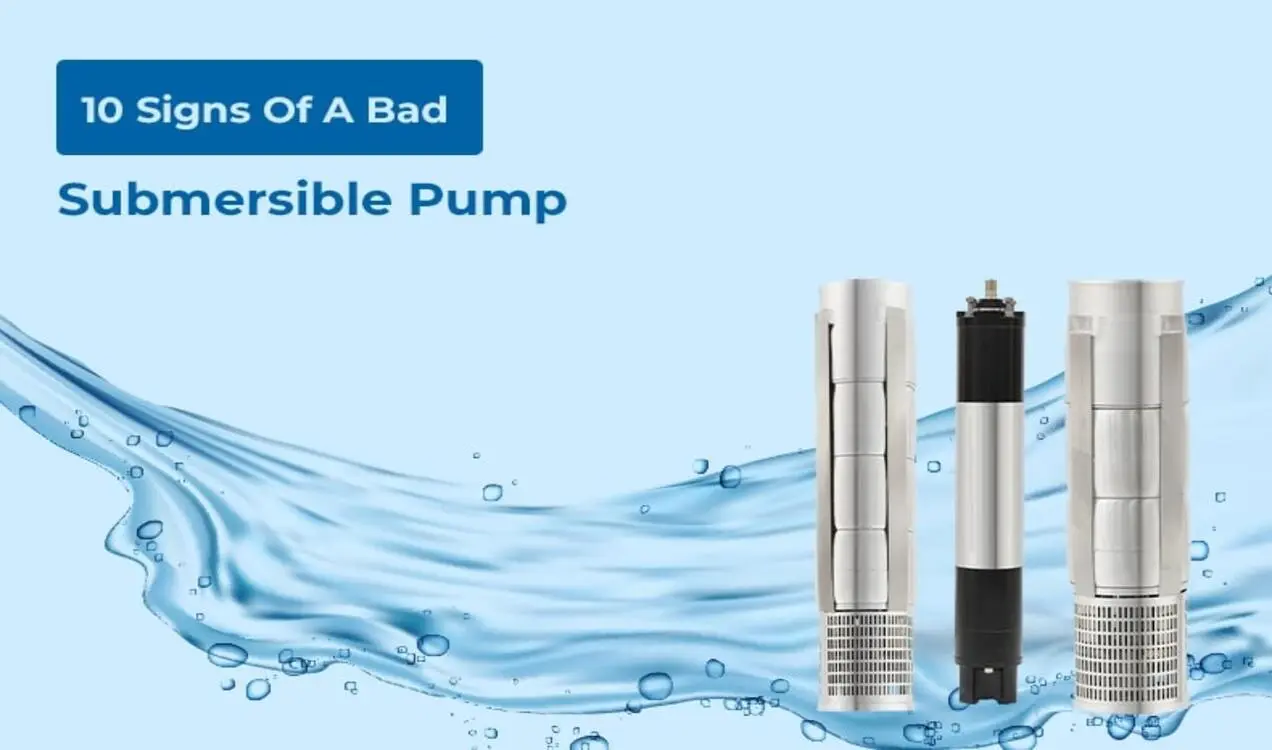Did You Know?
“15% of the American population (43 million) obtain water from a private well. Maintenance and service are thus vital for the smooth operation of the equipment.”
U.S. Geological Survey (2021)
Shallow well jet pumps use suction technology to build atmospheric pressure to pull water from the depth of 25 feet. Deep-well jet pumps have a jet mechanism installed at the well’s bottom. The jet forces the water through a two-pipe system in a circulatory motion. Such a pump is used for drawing water from a depth of over 25 feet.
A submersible well pump mechanism forces the water upwards than using suction. Installed in the water well, these compact pumps are more reliable and more efficient than their former jet pumps counterparts.
Faulty Submersible Pump Signs
1. Broken Seal:
Often, lack of pressure suggests that the pump needs refilling with water. A broken mechanical seal, a leaking pressure tank, or a pipe can cause low pressure. To check the leakage, pressurize the pump and fill it with soapy water, the soap bubbles will instantly help to identify the leaks.
2. Low Pressure:
The pressure switch of the pump regulates the pressure, which is measured in PSI (pounds per square inch). When the pressure falls below the preset minimum limit, this mechanism is turned on. However, if the pressure exceeds the maximum limit, it turns off the pump. Usually, the preset range is between 20-40 PSI, 30-50 PSI, and 40-60 PSI.
A regular check of the pressure switch should be done. It should be clean and free from debris, as sand or dust particles can easily clog the switch’s sensor. Remember, to shut off electricity before you check the switch.
3. Air in the Pipes:
If you discover a “spitting” sound as the water gushes out of the faucet, then the pump is the culprit. Perhaps, the pump is installed at a higher altitude than the well’s water level. Hence, it’s pumping water poorly and simultaneously sucking up a lot of air. Perhaps, the pipes have a leak that is causing the air to mix with water. Consider hiring a plumber to inspect the plumbing system.
4. Leakage:
If the coolant level falls below the earmarked level but there are no signs of a leak, check the oil dipstick. If it appears frothy, a possible leak is present in the water pump.
5. Continuous Running Pump:
The pressure switch regulates the operation of the water pump. If this mechanism was not designed, the pump would run continuously, leading to quick burn and degradation of the pump’s motor, plumbing system, and stress on your energy bills. Further, an incessantly operational pump would burst the plumbing system, as it would fill the pressure tank above its handling capacity.
Subsequently, some submersible pumps have an alarm system that sends alerts if the pump operates excessively. Alternatively, keep a regular check on the pump’s functioning.
6. Poor Water Pressure:
Does your faucet dribble water when you turn them on? The water pump is the culprit. Often, low pressure in the tank or wrong-sized pump leads to stalled water flow in the plumbing system. Hence, it’s essential to analyze water usage. If your water demand is heavy, you need a medium-sized pump to maintain proper pressure flow.
7. Strange Noise:
Hearing weird noises in your plumbing system? It could be faulty mechanical equipment. Rattling, grinding, or shredding sounds shouldn’t emerge from the good pump.
For instance, a pebble can get stuck in the impeller causing a loud noise. Cavitation is the next tell-tale sign of faulty equipment – it occurs when small water bubbles smack against the impeller, creating a cavity. A wrongly installed pump produces a rattling sound.
8. Water Contamination:
Grime, oil, rust, or soil contaminates the water rendering it an odd coloration, which causes distress to the water supply; especially if it’s drinking water.
Installed below non-porous bedrock submersible well pumps protect the water source from contaminants and soil. However, older jet pump models are susceptible to infiltration. Hence, get the well and plumbing system evaluated for smelly water.
9. Steam:
If you find steam emerging from the site of the water pump. Immediately call the experts. Often, the friction causes the pump to heat and turn water into steam. Unless the equipment is not opened it cannot be checked for fault.
10. No Water:
Switched on the faucet, and no traces of water? It’s time to check if the water pump is operating normally. Perhaps, the power source is dead or inadequate and hence cannot power up the water pump. Perhaps, a blown fuse or faulty wiring caused the pump to trip. Hire an electrician to examine the water pump and its electrical parts like wiring, fuse box, and control panel.
Conclusion:
Just like any machine prone to regular wear and tear with use, water pumps are no different. Preventive maintenance enables you to catch the problem early and nip it in the bud. Subsequently, you save a fortune on fixing it. Thus, regular checks, maintenance, and repairs are critical to the health of the water pump, if you want to enjoy an uninterrupted supply of water in your home.
Explore our wide range of Submersible pumps by visiting our website Unnati Pumps.


